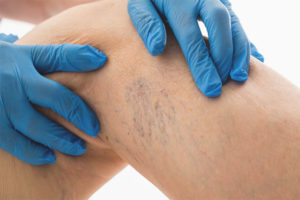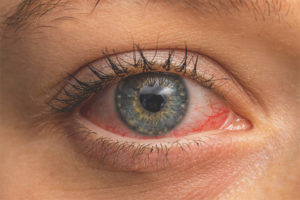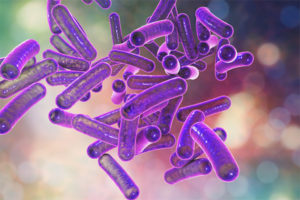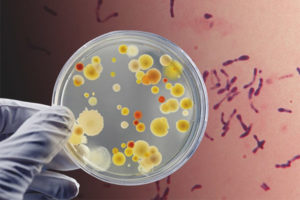The content of the article
- 1 Features of rotavirus in a child: clinical picture
- 2 How does an infectious disease progress
- 3 Incubation period
- 4 How long can an infectious disease last?
- 5 Dieting for infection in a child
- 6 What foods should not be given to children with infection
- 7 What foods can children with the virus
- 8 When is a patient considered no longer contagious?
- 9 How is a viral disease transmitted?
- 10 Where can I get the infection?
- 11 How dangerous is this disease?
- 12 How can a virus be distinguished from ordinary poisoning?
- 13 How is rotavirus infection diagnosed?
- 14 How is rotavirus infection treated
- 15 Is it necessary to bring down the temperature with a viral infection
- 16 The complicated course of the disease
- 17 Video: how to treat rotavirus infection in children
Among all the varieties of viral diseases that can cause diarrhea in children and adults, rotavirus infection is best known in modern medicine. In virology, this infection is known by many names. Specialists often call it intestinal or stomach flu, rotavirus enteritis. This virus most often occurs in autumn or winter, when a person's immunity begins to weaken. Quite often, the disease begins to develop as a normal SARS. Then the patient manifests upset stomach and diarrhea.
Rotavirus infection enters the human small intestine, after which rotavirus enteritis begins to develop in the body. The peak of the development of this disease occurs in the autumn-winter season and is usually divided into two periods. In the first stage of the development of an infection, the symptoms of an acute respiratory viral infection appear in the body of a sick child. In the second stage, the patient develops diarrhea. Quite often, rotavirus can cause vomiting and fever. The thermometer can rise to the level of 38 or 39. An intestinal upset with a viral infection is usually accompanied by diarrhea from 4 to 15 times a day. With a strong infectious disease and complications, the patient may experience a violation of the water balance, and, as a result, dehydration. Most often, symptoms of water shortage appear in young patients.
Features of rotavirus in a child: clinical picture
In small patients, after the incubation period has ended, virologists observe an acute clinical manifestation of the disease. On the first day, usually the thermometer column shows a high fever, the child is sick, vomiting and liquid bowel movements appear. Watery stool with rotavirus infection has some peculiarity. As inflammation occurs in the body, the baby's feces become yellow with a gray tint and has a clay mass. The child has nasal congestion, inflammatory processes and a sore throat undergo in the oral cavity. Sometimes the symptoms are accompanied by a cough. The baby may feel sluggish, often acting up and refusing to eat.
In children, quite often after eating, symptoms such as nausea or vomiting can occur. Such a reaction of the body to an infection can occur even if the baby does not eat anything at all.
In the first case, after vomiting in the mass, undigested food can be seen, but with an empty stomach, mucus will appear. The baby's temperature rises and keeps at the same level until the young patient is completely recovered. If the baby is not yet able to speak and unable to explain their feelings, caring parents are required to monitor the baby’s reaction. It is important to pay attention to crying, restless behavior of the baby, pathogenic bloating, rumbling in the stomach, sleepy state of the child. Also, the baby can greatly lose weight during the period of illness.
After the disease begins to fade into the background, after each trip to the toilet, the baby may have loose stools. Due to the fact that the signs of rotavirus infection often cannot be distinguished from food poisoning or can be confused with salmonellosis and cholera, it is not always possible to give an accurate assessment of eating disorder and diarrhea in a child. After the first characteristic symptoms of the disease appear, parents need to seek medical help, call a doctor at home. Before the ambulance arrives, the baby should not be given antispasmodics and drugs for pain relief, so as not to harm the kinetic picture of the disease and not prevent the establishment of a correct diagnosis.
How does an infectious disease progress
Any indigestion accompanied by diarrhea necessarily requires specialized treatment. The most common treatment in this case is the use of rehydration therapy. Patients and children over the age of six can quickly overcome the negative effects of intestinal infection can help the use of modern medicine for diarrhea Imodium. It helps to normalize peristaltic contractions, slow the progress of intestinal bowel movements. The medicine improves the absorption of water and electrolyte into the patient's body, and also increases the tone of the anus sphincter. Due to the positive effects of the drug, signs of intestinal infection may fade away or quickly disappear within one hour.
Incubation period
The duration of the course of the disease usually depends on how strong or weak the immune system a sick child has. This period is usually called incubation. No less important in this case is the number of viral particles that penetrate the body of a small patient. On average, the course of the disease can last from 3 to 5 days. During this period, rotaviruses multiply and accumulate in patients.
How long can an infectious disease last?

Usually the disease can occur in a child within a week, in some patients this period is longer and lasts about 10-12 days. After the disease recedes and the patient feels full recovery, his immunity is strengthened, so the child will no longer be able to catch this virus again. The body produces some specific lifelong immunity from rotavirus. An exception may be only patients with a very weak immune system.
Dieting for infection in a child
After the onset of a viral disease in a child, parents should pay special attention to a balanced diet. In addition, the meal should be fractional. The composition of baby food during a viral infection can be prescribed by the attending physician. Usually, he appoints small patients to adhere to some individual components of the children's diet during the period of illness. Food should be given to small crumbs in small pieces, the interval between feeding should be maintained. Very often in children during the period of the disease, appetite is completely lost. If the baby has symptoms of a viral infection and diarrhea is observed, then patients do not want to eat. However, parents should not force the baby to eat food. In this case, it is important to restore the child’s water balance, therefore, children are offered to drink low-fat chicken broth, give not very strong tea without sugar, brew rosehips or boil jelly.
What foods should not be given to children with infection
During the period of illness, parents should not give babies to eat dairy products. Such milk products are considered a favorable environment for the spread of the virus. Also, do not add sweet dishes to the menu of a sick child, you need to give up fruits and vegetables, fatty soups for a while, do not give canned foods, juices with concentrates, flour products, do not advise giving muffin and Borodino bread.
What foods can children with the virus
If the child felt more healthy, then the baby is better to switch to a special diet, which includes rice cereal or semolina. Cereals need to be boiled in water or vegetable broth. Young patients are given to eat mashed boiled carrots, steamed omelettes, apples, baked in the oven, and freshly crushed curd. Also, low-fat cutlets of fish and meat can be introduced into the diet. In general, with rotavirus, parents should strictly restrict their children from eating fats, fried foods and taking a lot of carbohydrates.
When is a patient considered no longer contagious?
A patient who has caught an intestinal virus is considered a carrier of infection, starting from the period of its infection until the virus completely disappears in the body. Throughout the illness, the patient secretes viruses that can be transmitted to other carriers.
How is a viral disease transmitted?
The main method of transmission of infection is called the fecal-oral route. Most often, the virus enters the human body through contaminated products, as well as due to unboiled raw water. This infection can tolerate low temperatures and even for a long time can maintain its vital activity in the refrigerator.
In addition, patients can become infected by transmission through the air. The virus is transmitted from person to person. Just like the symptoms of regular flu, an intestinal infection is accompanied by a lesion and inflammation of the airways. When a patient infected with a virus sneezes or coughs, small drops of mucus disperse through the air and spread the infection next to surrounding people.
Where can I get the infection?
You can get infection from rotavirus anywhere. Quite often, the disease can be infected in large places where many people gather. The spread of the virus can occur in a single case and even grow into a massive epidemic disease. Most often this occurs during the cold season.
How dangerous is this disease?

The characteristic features of rotavirus may differ in non-specific signs. Patients have a weakening of the body, a headache, weakness is felt in the body, vomiting is often sick and vomiting occurs, the temperature in the body rises to 38-39. The respiratory symptoms of the disease include the appearance of a runny nose and cough, the throat becomes inflamed and turns red. Once in the intestines and stomach, the infection quickly begins to assimilate in the body, multiplies and affects the mucous membrane of the patient’s small intestine. As a result, the infection negatively affects the entire digestive system of the patient. The physiological processes in the digestion of food are disturbed, which can lead to inflammation of the intestinal wall. Infection becomes a consequence of acute poisoning of the body, causes a feeling of nausea and patients, vomiting, and often provokes diarrhea.
How can a virus be distinguished from ordinary poisoning?
Symptoms of normal poisoning differ from rotavirus infection in that they occur unexpectedly. Rotavirus is considered a seasonal disease and, in addition to indigestion, can cause fever and respiratory symptoms in the body. Also characteristic features of the disease are grayish and yellowish clayey emptying, dark urine, often with a splash of blood.
How is rotavirus infection diagnosed?
During the diagnosis of the disease, specialists take into account both the characteristic clinical signs of the disease and the epidemic conditions. The time of year and the mass of the disease of the virus are taken into account. There is an informative method that experts use to confirm the disease. This is an analysis for the presence of rotavirus, which is detected in the feces using electron microscopy. You can also diagnose the virus at home, for this even a home test for rotavirus was created in the medical laboratory. This test is sold in modern pharmacies and in just ten minutes is able to find the causative agent of a viral infection in the feces of a child. Nevertheless, it is important not to leave the problem only in the walls of the house, not to self-medicate and be sure to consult a specialist for medical help.
How is rotavirus infection treated
Experts say with one voice that today there are no special methods for treating rotavirus. As a rule, doctors use a symptomatic method of treating an infection, which is aimed at restoring the water and salt balance in patients. Thanks to this therapy, patients stop vomiting and diarrhea, and the dehydrated body receives the necessary water. Doctors also prescribe special medications, the so-called rehydrants. In especially severe cases of the course of the disease, doctors can prescribe intravenous rehydration of the body. For small patients over the age of six, doctors may prescribe Imodium to eliminate loose stools and bowel problems in children.
It is not recommended to take antibiotics for such a disease, since this type of medication is more often prescribed to cure bacterial diseases. In the case of uncontrolled intake of antimicrobial drugs or self-medication, patients may have problems with intestinal dysbiosis.
To prevent infection, doctors often give patients a vaccination against the virus. Vaccination is a special vaccine against rotavirus, which contains a weakened strain of intestinal flu. The vaccine is a colorless liquid, thanks to it, patients develop resistance to rotavirus.
Is it necessary to bring down the temperature with a viral infection
The complicated course of the disease
Most often, this infectious disease goes away without complicated consequences for the patient. It is important to ensure that during the illness the body does not lose much water. Parents should watch the children so that the mark on the thermometer does not rise above 39 degrees. This can cause cell damage and dehydration. Although with this virus, body temperature rarely rises above the 39 degree mark.
If parents do not seek medical help on time, but treat the infection with loose stools on their own, this may be the result of dehydration of the child's body. In the most acute cases, even heavy drinking of water will not help overcome dehydration, so doctors prescribe the introduction of fluids intravenously under the supervision of medical personnel.
Video: how to treat rotavirus infection in children











Submit